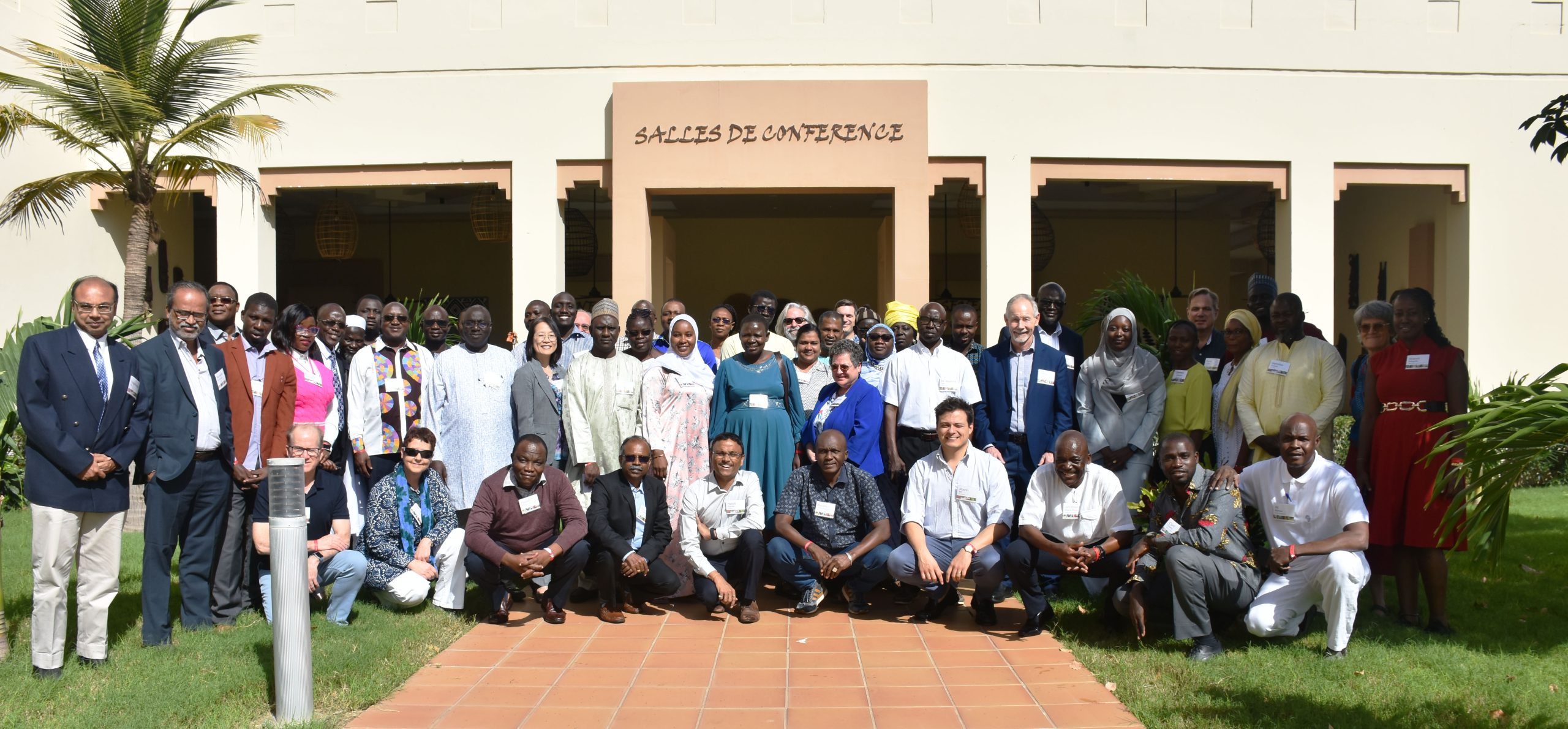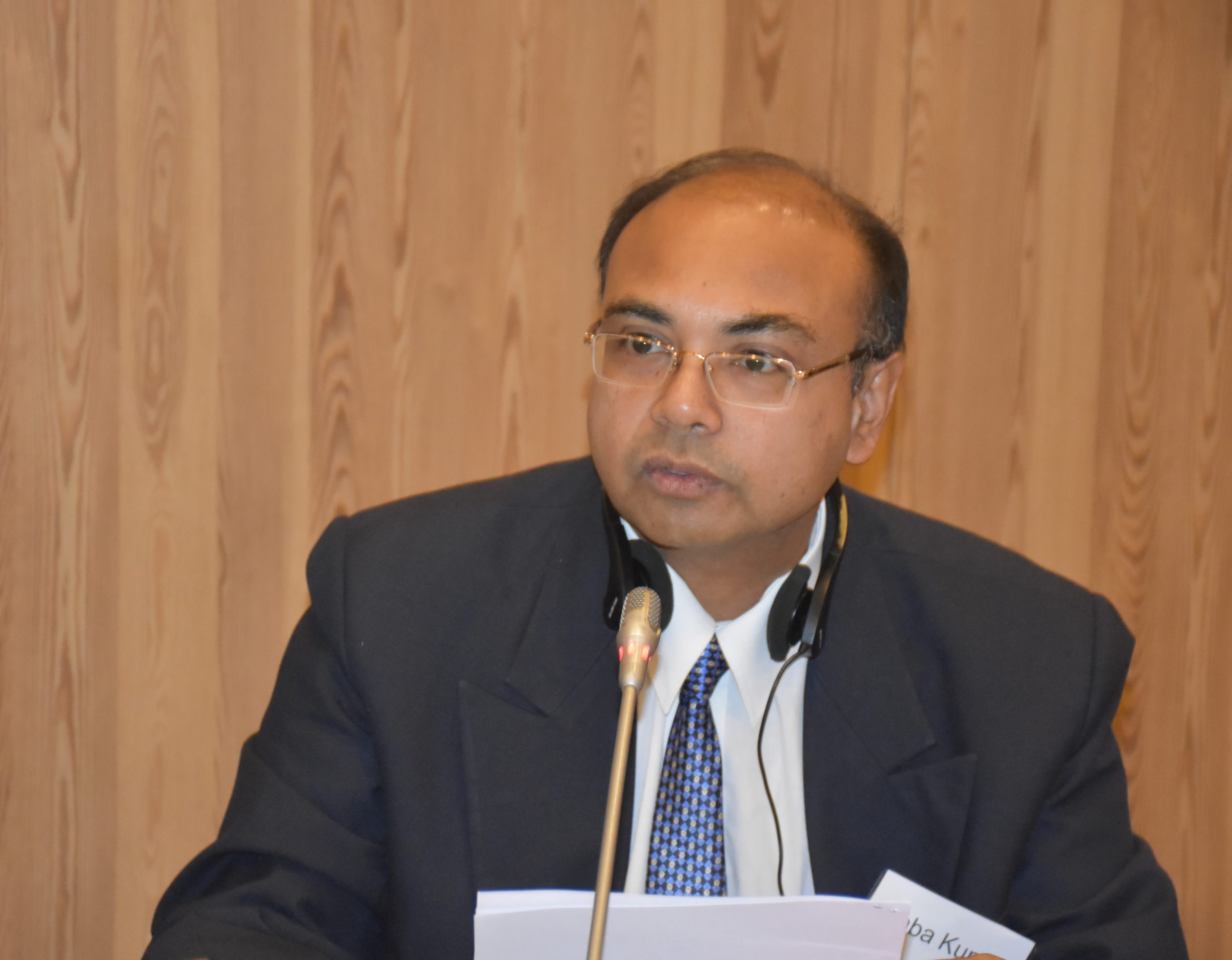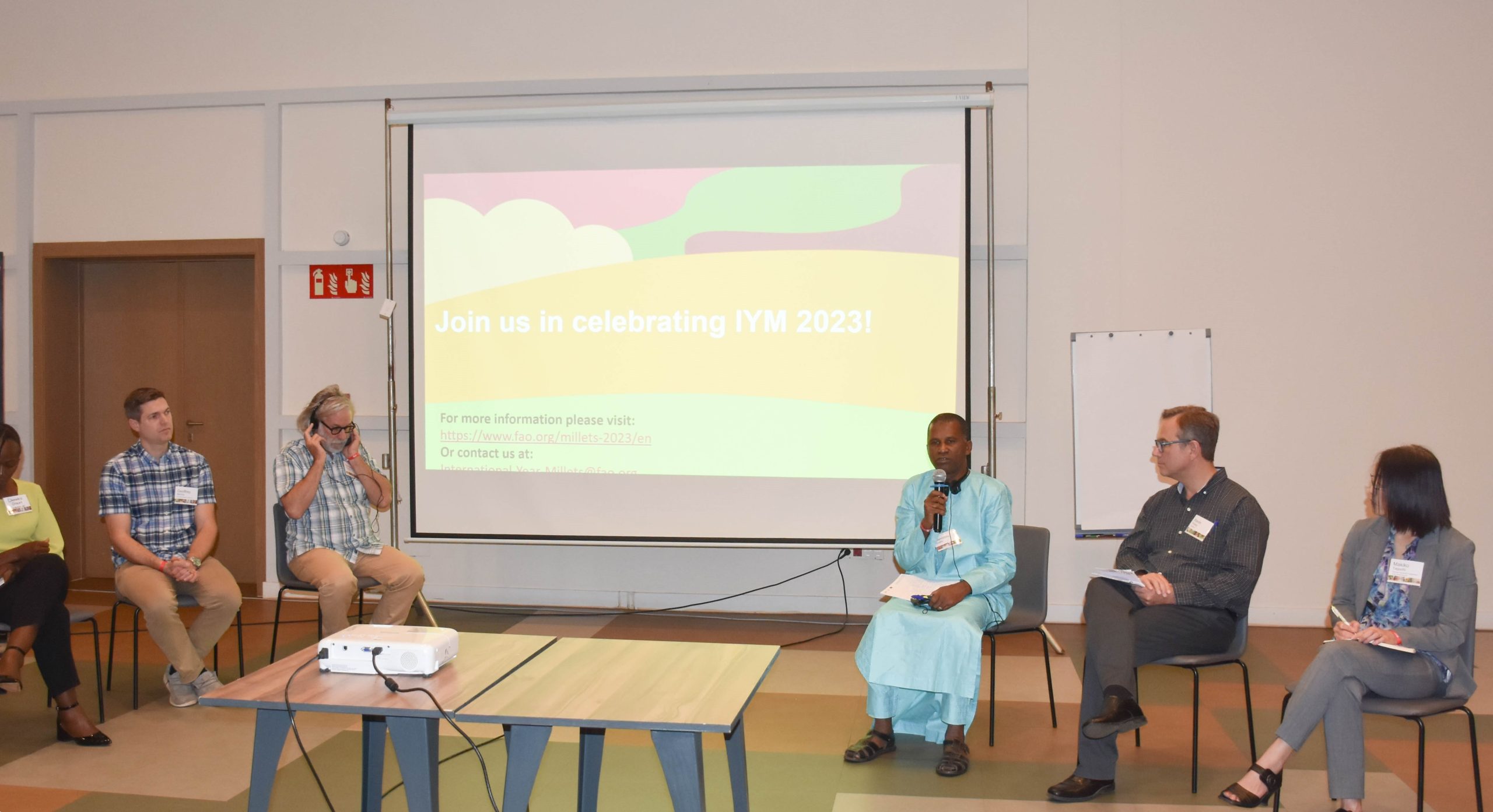March 26, 2024
In a landmark initiative to bolster sustainable agriculture and food security, the consultative workshop ‘Bottlenecks to Expansion of Pearl and Finger Millets in Africa’ marked a pivotal step towards revitalizing millet cultivation across the continent. Spearheaded by the Bill & Melinda Gates Foundation, in collaboration with CIMMYT and the Senegalese Institute of Agricultural Research (ISRA), a meeting held in Senegal united global experts to unlock the untapped potential of millets as a cornerstone of sustainable agriculture and food security in Africa.
The discussions included identifying the symptoms of the problem, underlying issues causing these symptoms, and the interventions needed to be implemented to address these issues. This collaborative efforts among national and international organizations including government bodies, research institutes, and NGOs, demonstrated the goal of revitalizing millet cultivation through partnerships.
 A group photo of the participants in the ‘Bottlenecks to Expansion of Pearl and Finger Millets in Africa’ workshop in Senegal. (Photo: Marion Aluoch/CIMMYT)
A group photo of the participants in the ‘Bottlenecks to Expansion of Pearl and Finger Millets in Africa’ workshop in Senegal. (Photo: Marion Aluoch/CIMMYT)
The United Nations General Assembly declared 2023 the International Year of Millets to raise awareness of and direct policy attention to millets’ nutritional and health benefits and their suitability for cultivation under adverse and changing climatic conditions.
Long overlooked but brimming with potential, millets offer a sustainable solution for both farmers and consumers in terms of profitability, adaptability, and sustainability in farming, as well as healthier dietary options for consumers.
Lessons learned from India
India, a key player in millet production, provided valuable insights into millet cultivation and consumption, providing a potential model for Africa to emulate in its millet-related strategies.
To understand the growth of millets in India, the Indian Ambassador to Senegal, Naba Kumar Pal, highlighted the strategies used by the Indian government to raise awareness about millets as a nutritious cereal that contributes to food security and provides a nutritious dietary option aimed at eliminating hunger and improving nutrition in his opening remarks.
“The first step the government did was to rebrand millets from ‘coarse grains’ to ‘nutri-cereals’, a move that has significantly increased domestic consumption and market interest of millets in India,” said the ambassador.
 Indian Ambassador to Senegal, Naba Kumar Pal, highlights the Indian government’s efforts to promote millets as a nutritional powerhouse. (Photo: Marion Aluoch/CIMMYT)
Indian Ambassador to Senegal, Naba Kumar Pal, highlights the Indian government’s efforts to promote millets as a nutritional powerhouse. (Photo: Marion Aluoch/CIMMYT)
In Africa, millets are under appreciated and not utilized as crops. They are often labeled as a ‘poor man’s crop,’ ‘neglected crop,’ or ‘orphan crop’. The negative connotations have, among other areas, influenced consumers’ perceptions. By changing the vocabulary from demeaning to empowering, millets’ image can be transformed from an overlooked option to a crop of choice in Africa.
The workshop also delved into policy advocacy and commercialization efforts in India, and how these strategies could be replicated in African contexts. Tara Satyavati and Dayakar Rao, representing Indian institutions, shared insights on millet production, nutritional evaluation, and the development of value-added products. The importance of policy intervention, such as increasing the Minimum Support Price (MSP) for millets and including them in public meal programs in India, was discussed. These measures not only provided financial incentives to farmers but also increased accessibility and consumption among the general population.
The two asserted that “millets offer a sustainable solution for both farmers and consumers in terms of profitability, adaptability, and sustainability in farming, as well as healthier dietary options for consumers.”
Millets are adaptable to diverse climates, have low water requirements, and provide nutritional benefits. African countries, which face similar issues in terms of climate change and food security, can use millets as a crop to promote environmental sustainability and economic viability.
National and international collaborations
A panel discussion shed light on national and international initiatives that highlighted collaborative efforts in crop improvement and millet innovations. On the national level, Hamidou Diallo from the Ministry of Agriculture, Rural Equipment, and Food Sovereignty of Senegal (MAERSA) outlined a multi-pronged approach for Senegal. These approaches included increasing millet production, providing high-quality seeds, equipping local producers with essential tools and equipment, providing fertilizers to farmers, and expanding the overall cultivated areas of millet. These efforts represent a focused approach to leveraging agricultural innovation in millets to improve livelihoods and income for small-scale farmers.
“Aligning with the needs of the local community ensures the initiatives are impactful and resonate with the agricultural landscape and community needs,” he emphasized.
Insights into the international initiatives included discussions on innovative initiatives in the Dryland Crop Program (DCP), presented by Dryland Crops Program Director and Wheat Program Director Kevin Pixley, included the establishment of the African Dryland Crops Improvement Network, gene editing, a legumes mining project and the Vision for Adapted Crops and Soils (VACS) project, that will include millets as a prioritized crop.
“We need to find innovative ways to reach more farmers with options to improve their livelihood and popularize millets across different market segments,” said Pixley.
 From left to right: Damaris Odeny (ICRISAT India), Geoff Morris (Colorado State University), Douglas Gayeton (co-founder of The Lexicon), Hamidou Diallo (MAERSA, Senegal), Kevin Pixley (director of the Dryland Crops Program), and Makiko Taguchi (FAO), engage in a panel discussion on the importance of national and international initiatives in promoting crop improvement and millet innovations, highlighting the collaborative spirit driving agricultural progress.
From left to right: Damaris Odeny (ICRISAT India), Geoff Morris (Colorado State University), Douglas Gayeton (co-founder of The Lexicon), Hamidou Diallo (MAERSA, Senegal), Kevin Pixley (director of the Dryland Crops Program), and Makiko Taguchi (FAO), engage in a panel discussion on the importance of national and international initiatives in promoting crop improvement and millet innovations, highlighting the collaborative spirit driving agricultural progress.
Other topics covered included insights from the United States Agency for International Development (USAID) innovation lab on sorghum and millets, emphasizing the importance of African-led projects and addressing the knowledge gap between African and U.S. researchers.
The pioneering role of the International Crops Research Institute for the Semi-Arid Tropics (ICRISAT), particularly in agri-business incubation, was noted, along with the Feed the Future Innovation Lab for Crop Improvement, managed by USAID and Cornell University efforts in fostering regional collaborations.
Makiko Taguchi of the Food and Agriculture Organization of the United Nations (FAO) emphasized the importance of global engagement in promoting millets as a sustainable and nutritious food source for global food security and agricultural development and highlighted the various initiatives and projects born of the International Year of Millets. Douglas Gayeton, co-founder of The Lexicon emphasized the role of effective messaging in changing people’s perceptions of millets. He underscored the importance of shifting away from terms like ‘neglected’ and ‘orphaned’ crops to more positive empowering language that resonates with consumers and policy makers.
CIMMYT’s role in dryland crop innovation
Recognizing the ever-evolving needs of society at large, CIMMYT began an initiative to advance research and broaden its impact by implementing the Dryland Crops Program. This approach is based on CIMMYT’s 2030 strategy, which will shape agriculture’s future as a driver of climate resilience, sustainable, and inclusive agricultural development, and food and nutrition security, all while meeting the United Nations Sustainable Development Goals and Africa 2063 by promoting food security, improving nutrition, and mitigating the effects of climate change.
The meeting underscored the immense potential of millets in Africa to contribute to a resilient and nutritious future, reinforcing the need for continued collaboration, innovation, and investment in this vital crop. With the right mix of policy support, technological innovation and market development, millets could be the key to Africa’s resilient and sustainable agricultural future. The workshop concluded with a call to action for stakeholders to collaborate and implement innovative practices to enhance the growth of the millet sector in Africa.